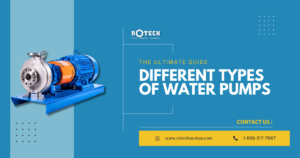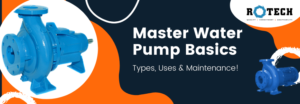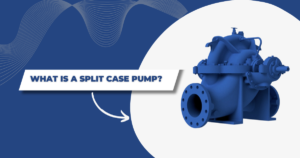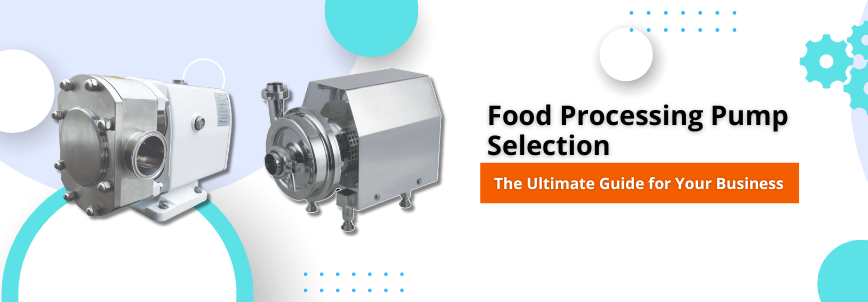Importance of Food Processing Pumps in the Industry
Food processing pumps play a crucial role in the food and beverage industry. They are essential for transferring liquids, semi-solids, and even high-viscosity products throughout the processing line. Proper pump selection ensures efficient production, product consistency, and adherence to strict hygiene standards. This guide aims to provide valuable insights to help businesses choose the right food processing pump that best suits their specific needs.
This comprehensive guide will cover the various types of food processing pumps available, their working principles, and their applications in the industry. It will also offer practical advice on factors to consider when selecting a pump, including material compatibility, sanitary requirements, efficiency, and cost considerations. Additionally, the guide will delve into special considerations for hygienic design, maintenance, safety, installation, and future trends in food processing pumps.
Understanding Food Processing Pumps
Definition and Function of Food Processing Pumps
Food processing pumps are devices designed to move food products through the production process. They are used to transfer liquids, handle high-viscosity materials, and transport solid food items. Pumps are essential for maintaining a continuous flow of products during various stages of food processing.
Types of Food Processing Pumps
1. Centrifugal Pumps: Ideal for transferring low- to medium-viscosity liquids. They operate by converting rotational energy into kinetic energy to move the fluid.
2. Positive Displacement Pumps: Suitable for pumping high-viscosity fluids, these pumps create a constant flow by trapping and moving a fixed amount of fluid at a time.
3. Diaphragm Pumps: Often used for gentle product handling, these pumps utilize flexible diaphragms to move fluids and prevent product contamination.
Key Components and Working Principles
1. Materials and Construction: Food processing pumps must be made of materials that are safe and compatible with the food products being handled. Stainless steel and food-grade elastomers are commonly used materials.
2. Hygienic Design Considerations: Pumps should be designed with smooth surfaces, minimal dead spaces, and easy disassembly for thorough cleaning and sanitation.
Assessing Your Food Processing Needs
Identifying Specific Food Processing Applications
1. Liquid Transfer: Consider the volume and flow rate required for transferring liquids between tanks or along the production line.
2. Mixing and Blending: For applications that involve mixing ingredients or blending liquids, choose a pump capable of handling such processes.
3. High-Viscosity Pumping: When dealing with thick or high-viscosity products like sauces and pastes, select a pump designed for efficient handling.
Volume and Flow Requirements:
Calculate the desired flow rate and volume needed to meet production targets and choose a pump that can handle these requirements effectively.
Compatibility with Food Products:
Ensure the pump’s construction materials are compatible with the specific food products being processed to prevent contamination and ensure product safety.
Compliance with Industry Regulations and Standards:
Verify that the selected pump meets the relevant food processing industry standards and regulations.
Factors to Consider When Choosing a Food Processing Pump
Material Compatibility: Select a pump constructed from materials that are resistant to corrosion, abrasion, and chemical reactions with the food products.
Sanitary Requirements: Prioritize pumps with hygienic design features, such as smooth surfaces, self-draining capabilities, and easy-to-clean components to maintain food safety.
Efficiency and Performance: Consider the pump’s energy efficiency and its ability to handle the required flow rate while maintaining product integrity.
Maintenance and Serviceability: Opt for pumps that are easy to maintain, with readily available spare parts and straightforward service procedures.
Cost Considerations: Evaluate the initial cost, operating cost, and overall cost of ownership when comparing different pump options.
Energy Efficiency and Environmental Impact: Choose energy-efficient pumps that contribute to sustainability and environmental responsibility.
Selecting the Right Pump for Different Food Products
Factors to Consider When Choosing a Food Processing Pump
1. Sauces and Soups: Use pumps that can handle low- to medium-viscosity liquids with gentle handling capabilities.
2. Dairy Products: Opt for pumps that can handle dairy products without compromising their quality or texture.
3. Beverages: Consider pumps suitable for transferring and handling a wide range of beverages, including carbonated and non-carbonated drinks.
Pump Selection for High-Viscosity Foods
1. Peanut Butter and Other Pastes: Choose pumps designed for handling thick and sticky materials without clogging or product degradation.
2. Fruit Purees: Select pumps that can effectively transfer fruit purees without damaging the fruit fibers.
3. Confectionery Fillings: Utilize pumps suitable for handling viscous fillings used in confectionery production.
Pump Selection for Solid Foods
1. Meat Processing: Choose pumps capable of gently transferring and handling meat products without altering their texture.
2. Fruit and Vegetable Processing: Opt for pumps designed to move whole or diced fruits and vegetables efficiently.
3. Bakery and Snack Products: Consider pumps that can handle various solid ingredients used in bakery and snack production.
Special Considerations for Hygienic Design
CIP (Clean-in-Place) and SIP (Sterilize-in-Place) Capabilities: Select pumps that allow for easy cleaning and sterilization without disassembly.
Surface Finish and Smoothness: Prioritize pumps with smooth, polished surfaces that prevent bacterial growth and product buildup.
Design Features for Easy Disassembly and Cleaning: Look for pumps that can be quickly disassembled, cleaned, and reassembled to minimize downtime during cleaning procedures.
Maintenance and Safety
Regular Maintenance Protocols: Develop a maintenance schedule to ensure the pump operates optimally and prevent unexpected breakdowns.
Troubleshooting Common Issues: Educate staff on identifying and resolving common pump problems to minimize production disruptions.
Operator Safety Guidelines: Provide training on pump operation and safety protocols to avoid accidents and ensure a safe working environment.
Installation and Integration
Proper Pump Installation Procedures: Follow manufacturer guidelines for correct pump installation and positioning.
Integration with Existing Food Processing Equipment: Ensure seamless integration of the pump with other processing equipment to optimize production efficiency.
Training Staff on Pump Operation: Train operators on pump operation, maintenance, and safety practices.
Future Trends in Food Processing Pumps
Emerging Technologies and Innovations: Explore new pump technologies and trends shaping the future of the food processing industry.
Sustainability and Eco-friendly Solutions: Discover how the industry is adopting eco-friendly pump solutions to reduce energy consumption and environmental impact.
Conclusion
Recap of Key Points: Summarize the essential considerations for selecting the right food processing pump.
Importance of Selecting the Right Food Processing Pump: Reiterate the significance of choosing the right pump for ensuring product quality, production efficiency, and compliance with hygiene standards.
Encouragement to Make Informed Decisions for Your Business: Encourage businesses to use the knowledge gained from this guide to make informed decisions that align with their specific food processing needs and long-term goals.
FAQs:
Q: What are the key differences between centrifugal pumps and positive displacement pumps for food processing applications?
A: Centrifugal pumps are ideal for low- to medium-viscosity liquids and offer high flow rates, while positive displacement pumps are better suited for handling high-viscosity products and provide a more consistent flow rate.
Q: How can I ensure that the food processing pump I choose complies with hygiene and safety standards?
A: Look for pumps with hygienic design features, such as smooth and polished surfaces, self-draining capabilities, and easy disassembly for thorough cleaning. Additionally, check for certifications and approvals from relevant regulatory bodies.
Q: Are there specific pumps suitable for handling solid food ingredients, such as fruits and vegetables, without damaging them during processing?
A: Yes, there are pumps designed to handle solid food ingredients gently to preserve their texture and quality. Look for pumps with gentle handling capabilities and adjustable speed controls to minimize product damage.
Q: What maintenance protocols should I follow to ensure the longevity and efficiency of my food processing pump?
A: Regular maintenance is crucial for optimal pump performance. Follow the manufacturer’s recommended maintenance schedule, inspect and clean the pump regularly, and replace worn or damaged parts promptly.
Q: How can I determine the energy efficiency of a food processing pump before making a purchase?
A: Look for the pump’s energy efficiency rating and check if it meets industry standards. Some manufacturers provide energy consumption data and compare the pump’s performance against similar models.
Q: Can a food processing pump handle both liquid and high-viscosity products without compromising quality or efficiency?
A: Some pumps are designed to handle a wide range of products, including both liquids and high-viscosity materials. Look for pumps with adjustable flow rates and flexible impellers to accommodate different product viscosities.
Q: What are the emerging trends in food processing pumps, and how can they benefit my business in the long run?
A: Emerging trends include advancements in pump materials, smart pump technologies, and sustainability-focused designs. Embracing these trends can lead to improved efficiency, reduced energy consumption, and a positive impact on your brand’s environmental footprint.
Recent Posts

A Comprehensive Guide to Types of Water Pumps and Their Applications
Introduction Water pumps are indispensable

The Complete Guide to Water Pumps: Types, Uses, and Maintenance
Water is life, and the

Comprehensive Guide to Split Case Pumps
Split case pumps are a


